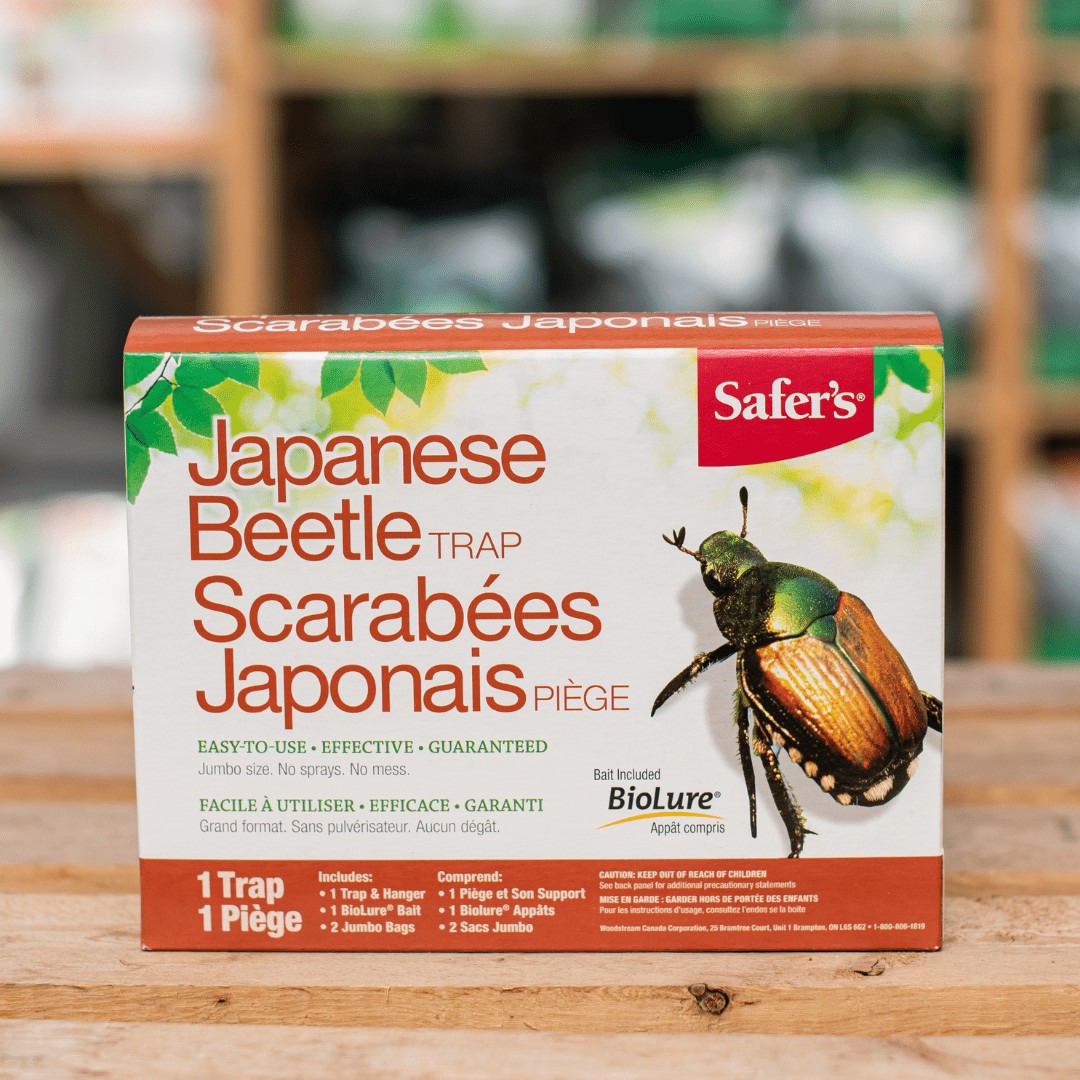Monday, June 21st, 2021
Disclaimer: Product stock and prices are subject to change after blog publish date.
Are you noticing significant leaf damage on the plants in your garden? If so, it could be Japanese Beetles!
What To Look For
Japanese Beetles are selective with what part of the leaf they like to eat. They do not like to munch on the veins in the leaves. Therefore, if you are noticing leaf skeletonization, there is a good chance that Japanese Beetles are the cause.
Japanese Beetles are easy to spot with their metallic green heads and copper-coloured bodies. They have a thick, hard shell, which protects them against most pest products. Luckily, there are some effective solutions to getting rid of and preventing Japanese Beetles. Keep reading below!


Traps
There are both pros and cons to using traps to fight off Japanese Beetles. An advantage is that the traps are highly successful in catching Japanese Beetles when they emerge in June to mid-July. Pheromones are used to attract Japanese Beetles to the trap. They fall into the collection bags and are unable to escape because they are poor fliers. A potential disadvantage is that the traps can attract more Japanese Beetles to your yard. That is why it is recommended to place traps as far away from the plants you are trying to protect as possible (at least 3 metres away). If the trap is placed too close to your garden, you may notice an increase in damage caused by Japanese Beetles. It is also important to empty the collection bags frequently. If collection bags get too full, Japanese Beetles may no longer be trapped in the bag and will be drawn to your precious plants instead.
If you think that Japanese Beetle traps are the best solution, we sell Safer’s Japanese Beetle traps, as well as some extra bait and bags. Japanese Beetle products are available in-store while quantities last.
Handpicking/Soapy Water
If you are looking for a quick fix to your Japanese Beetle problem, you can fill a bucket with some soapy water and handpick or shake the Japanese Beetles into the bucket to kill them. The best time to do so would be early in the morning as Japanese Beetles are sluggish during that time of the day.
Nematodes
Nematodes can stop the emergence of Japanese Beetles as they help combat the grubs in your lawn that eventually turn into Japanese Beetles. Nematodes are a natural and effective alternative to chemical pesticides and are perfectly safe for people and pets. They can be applied in both spring and fall. Interested in learning more about nematodes? Check out one of our previous blog posts on our website!
Plant Selection
There are certain plants that Japanese Beetles love to feast on and others that they find less appealing. If you know that you have Japanese Beetles in your area, you may want to avoid planting the following in your garden or planters: Canna, Dahlia, Echinacea (Coneflower), Hibiscus, Impatiens, Ipomoea (Potato Vine), Rhododendron, Rose, Virginia Creeper and Zinnia.

Canna

Virginia Creeper
Japanese Beetles tend to avoid the following plants: Begonias, Boxwood, Caladiums, Euonymus (Burning Bush), Forsythia, Magnolia and Marigolds. Please note that while some plants may not be as tasty to Japanese Beetles, if they are hungry enough, they may still take a bite and cause damage.

Boxwood

Caladium
We hope that this blog has provided you with enough information to identify if Japanese Beetles are the pests wreaking havoc on your garden and how to eliminate them! Feel free to contact us with any further questions.



